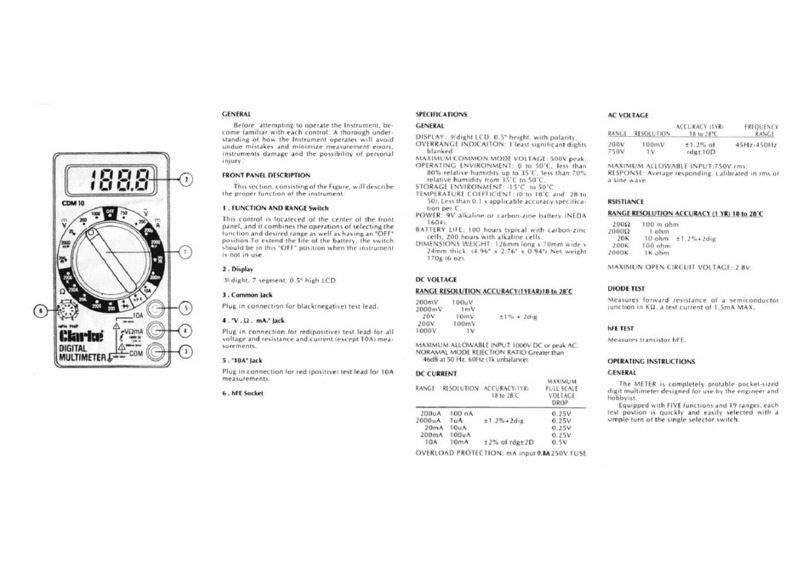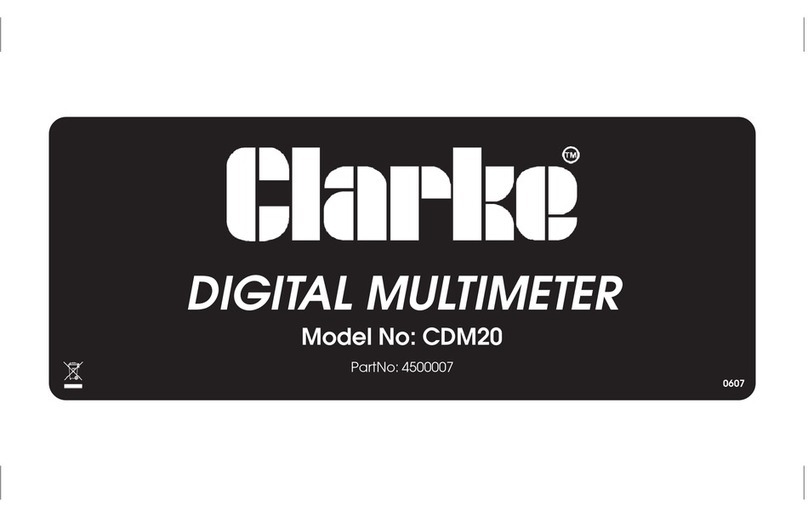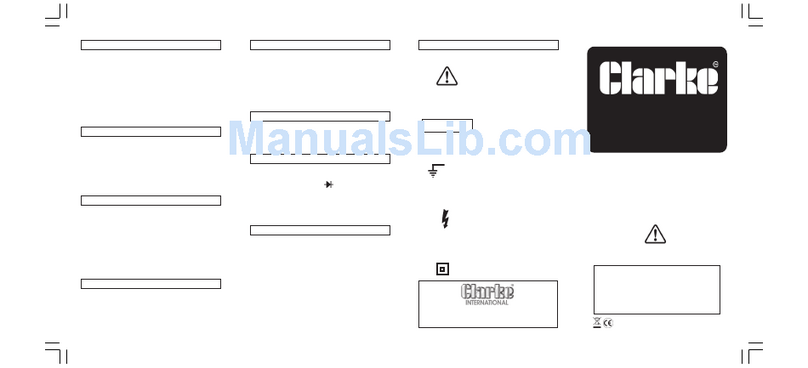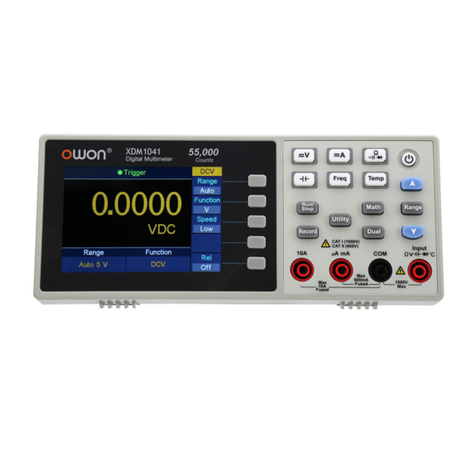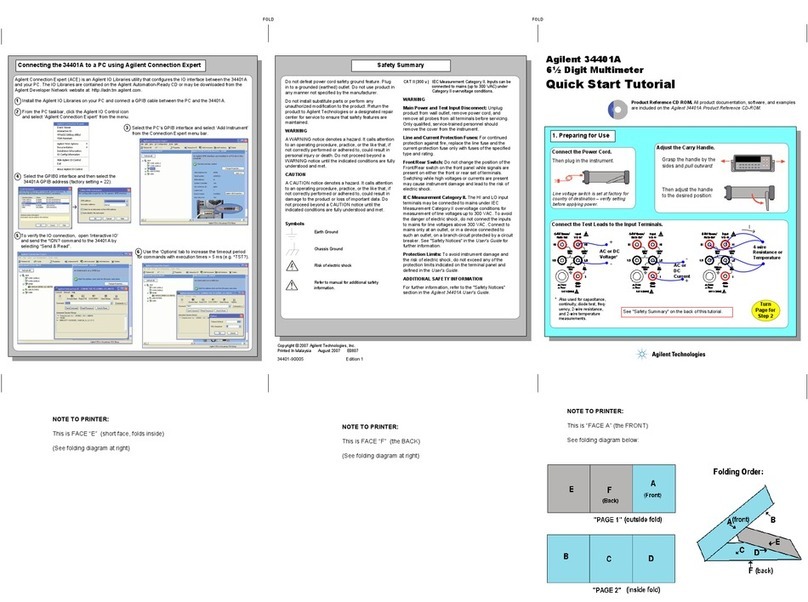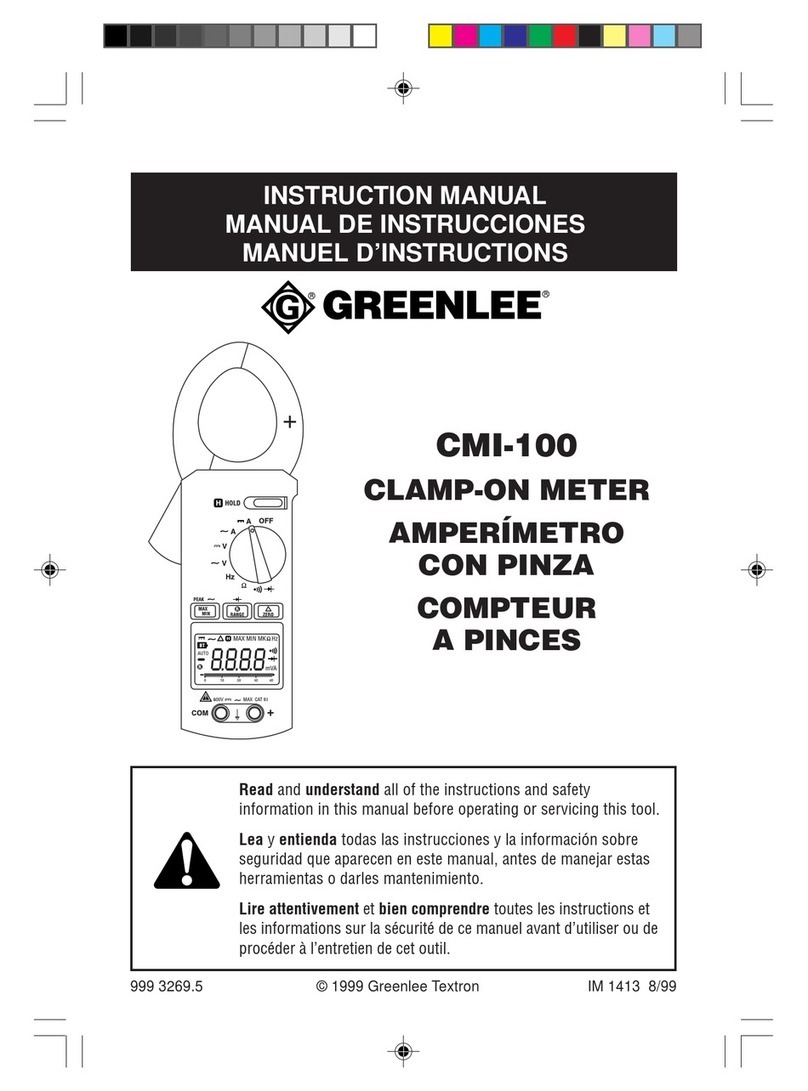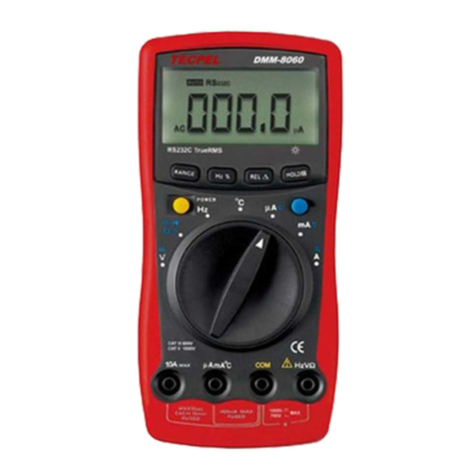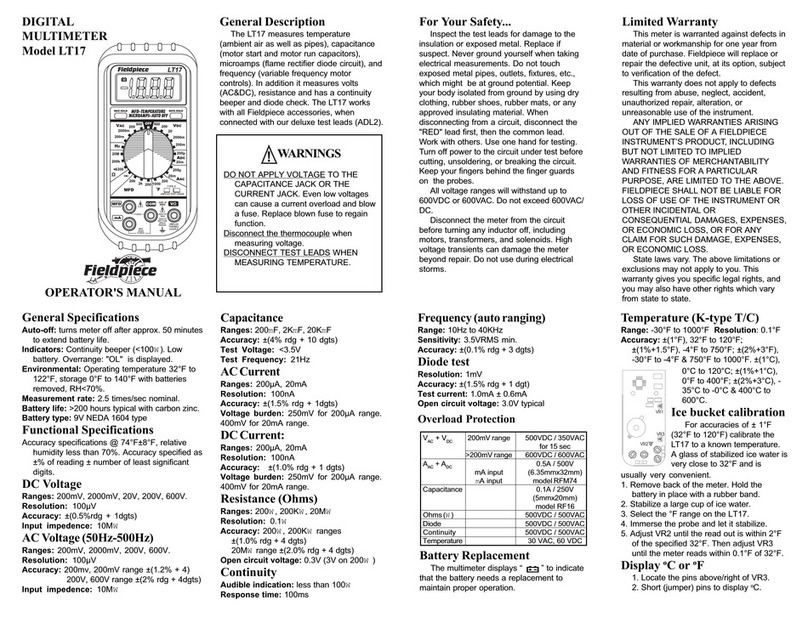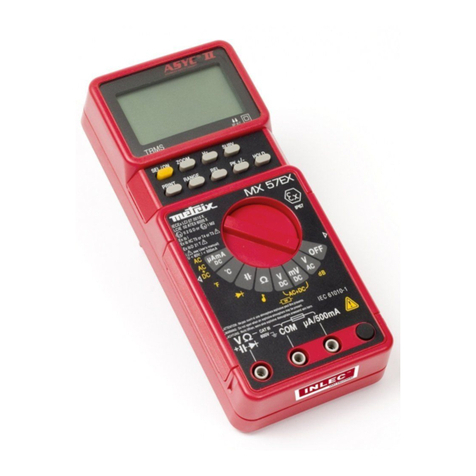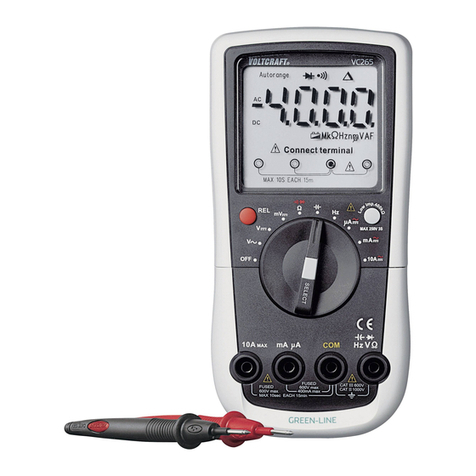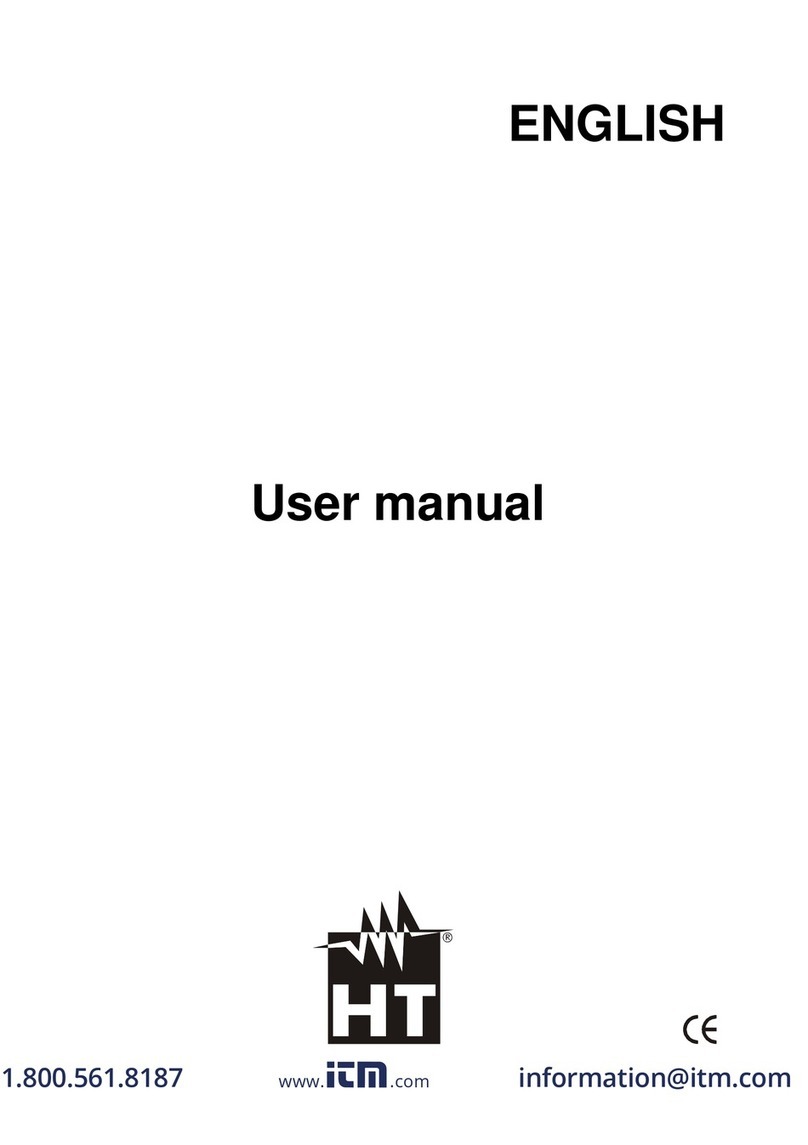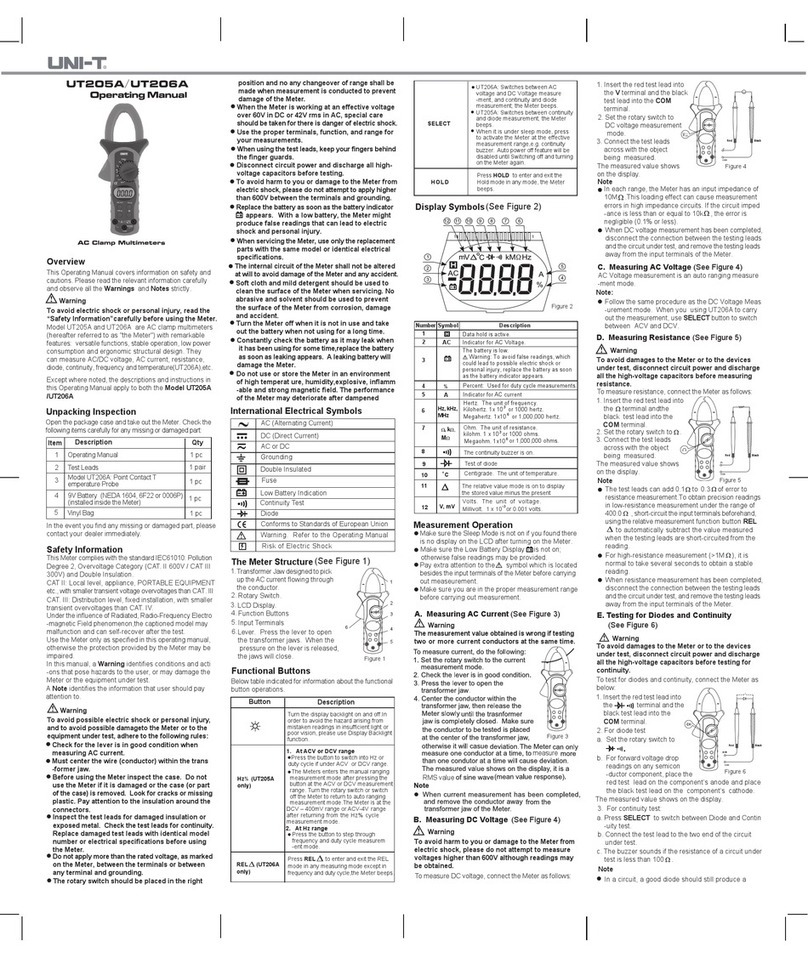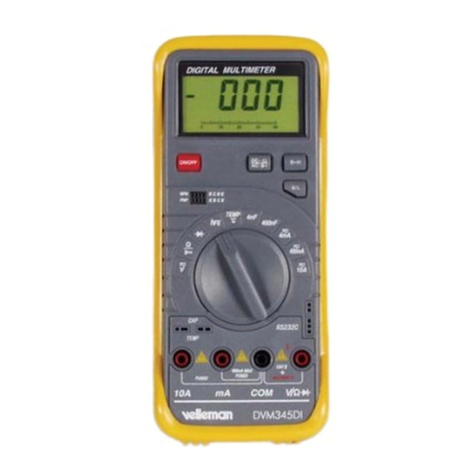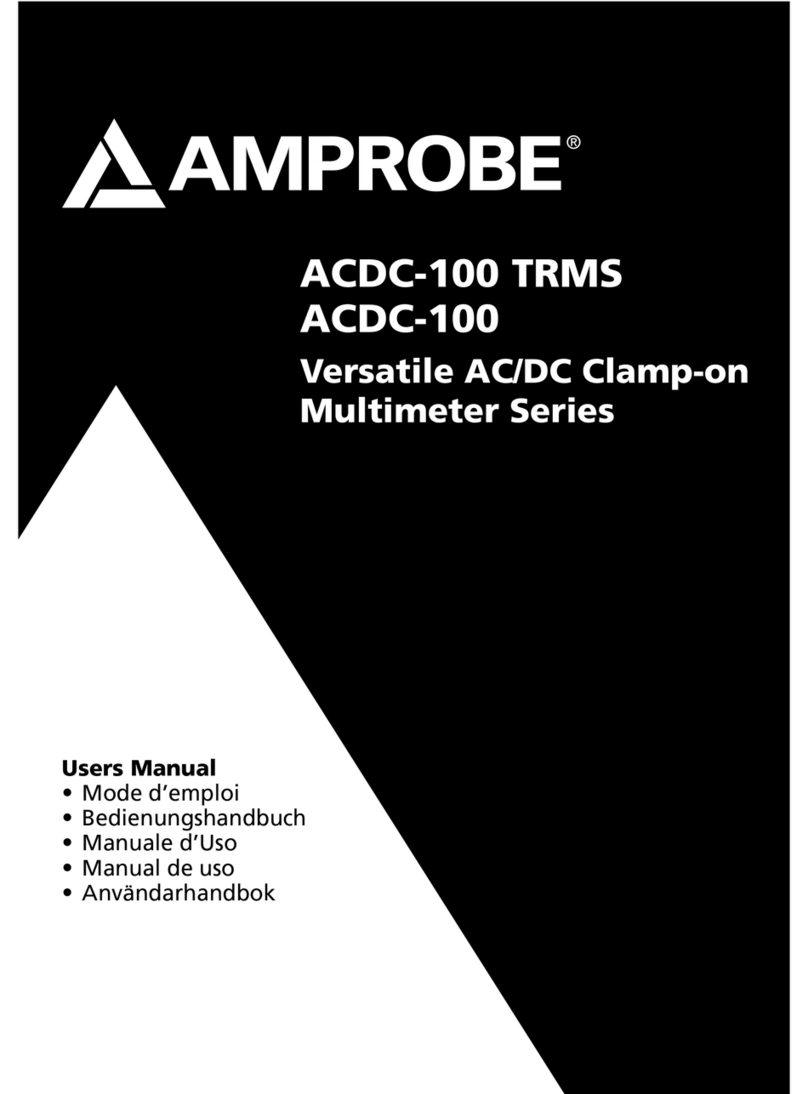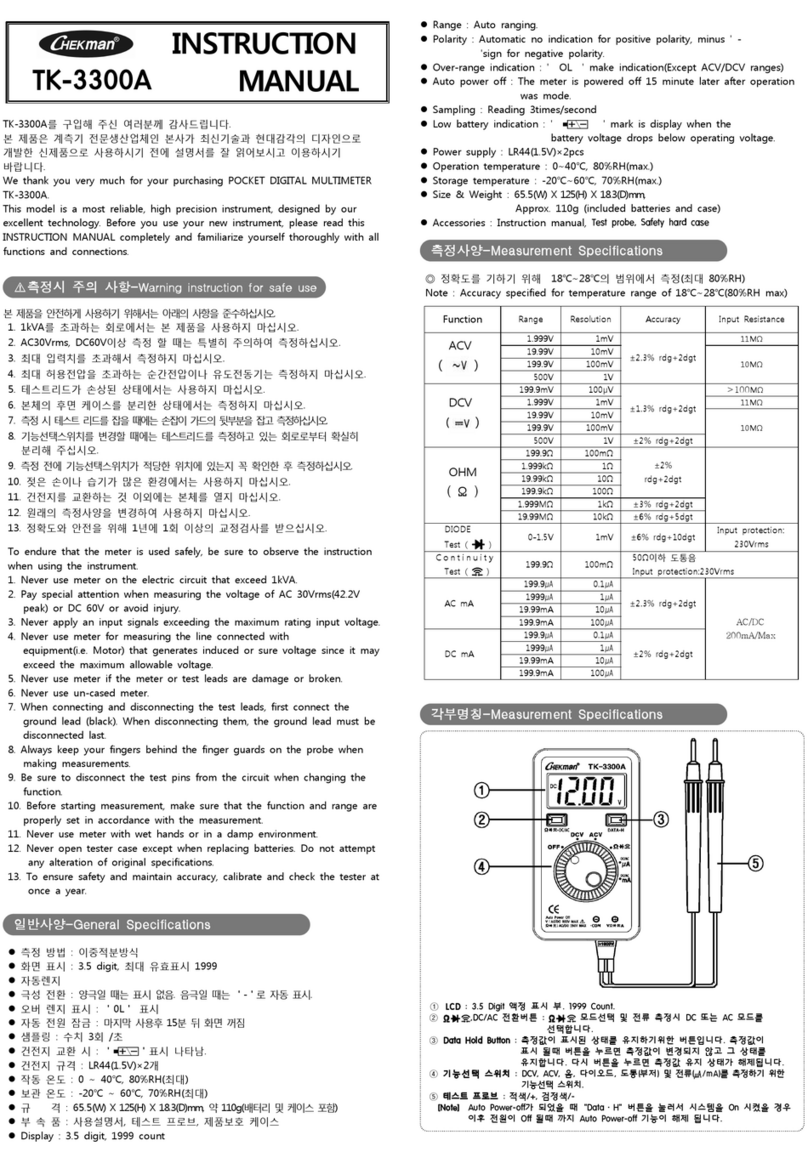Clarke CDM 85 User manual

USER INSTRUCTIONS
ORIGINAL INSTRUCTIONS DL0421 - Rev 2
OPEN JAW DIGITAL MULTIMETER
MODEL NO: CDM85
PART NO: 8133826

2
Parts & Service: 020 8988 7400 / E-mail: Parts@clarkeinternational.com or Service@clarkeinternational.com
INTRODUCTION
Thank you for purchasing this CLARKE CDNM85 Digital
Multimeter. Before attempting to use this product, please
read these instructions carefully. In doing so you will ensure
your safety and you can look forward to your purchase
giving you long and satisfactory service.
GUARANTEE
This product is guaranteed against faulty manufacture for
a period of 12 months from the date of purchase. Please
keep your receipt which will be required as proof of
purchase.
This guarantee is invalid if the product is found to have
been abused or tampered with in any way, or not used for
its intended purpose. Faulty goods should be returned to
their place of purchase, no product can be returned to us
without prior permission.
This guarantee does not effect your statutory rights.
SAFETY INFORMATION
This clamp meter has been designed according to IEC-
61010 concerning electronic measuring instruments with a
measurement category (CAT II 600 V).

3
Parts & Service: 020 8988 7400 / E-mail: Parts@clarkeinternational.com or Service@clarkeinternational.com
ELECTRICAL SYMBOLS
AC
(Alternating
Current)
DC (Direct
Current)
Dangerous
voltage may
be present
Important
safety
information.
Refer to the
manual
Earth Ground Double
Insulated
Diode

4
Parts & Service: 020 8988 7400 / E-mail: Parts@clarkeinternational.com or Service@clarkeinternational.com
OVERVIEW
Description Description
1Clamp Jaw: Used to
clamp the conductor
to be measured. to get
more accurate
reading, the
conductor should be in
the centre of the jaws.
5“V Q -0+” Jack: Plug0in
jack for the red
(Positive) test lead.
2Trigger: Used to open
and close the jaws for
AC current
measurement.
6Rotary Switch: Used to
select desirable
function and range as
well as to turn the
meter on/off.

5
Parts & Service: 020 8988 7400 / E-mail: Parts@clarkeinternational.com or Service@clarkeinternational.com
SPECIFICATIONS
3Display: 3 1/2” LCD,
with a max. reading
1999.
7“Hold” Button: After
pressing the button,
the present reading is
held on the display,
meanwhile “HOLD” is
displayed on the LCD
as an indicator. To exit,
press the button again.
4“COM” Jack: Plug-in
jack for the black
(Negative) test lead.
Display 3 1/2” Digit LCD
Overrange Indication “1” Shown on LCD
Sampling Rate Approximate 3 Times per
Second
Jaw Opening Capability 27mm
Max. Measurable
Conductor
25mm
Battery 3V, CR2032, 3 Batteries
Operation Temperature 0°C -40°C <75%RH
Storage Temperature -20°C -60 °C, <85%RH
Dimensions 151mm x 65mm x 34mm
Weight 127g (including Batteries)
Description Description

6
Parts & Service: 020 8988 7400 / E-mail: Parts@clarkeinternational.com or Service@clarkeinternational.com
WARNING
To avoid possible electric shock or personal injury, follow
these guidelines:
• Do not use the meter if it is damaged. Before you
use the meter, inspect the case. Pay particular
attention to the insulation surrounding the
connectors.
• Inspect the test leads for damaged insulation or
exposed metal. Check the test leads for continuity.
Replace damaged test leads before you use the
meter.
• Do not use the meter if it operates abnormally.
Protection may be impaired. When in doubt, have
the meter serviced.
• Do not operate the meter around explosive gas,
vapor, or dust.
• Do not apply more than the rated voltage, as
marked on the meter, between terminals or
between any terminal and earth ground.
• Before use, verify the meter’s operation by
measuring a known voltage.
• When servicing the meter, use only specified
replacement parts.
• Use with caution when working above 30V ac rms,
42V peak, or 60V dc. Such voltages pose a shock
hazard.
• When using the probes, keep your fingers behind
the finger guards on the probes.
• Connect the common test lead before you
connect the live test lead. When you disconnect
test leads, disconnect the live test lead first.

7
Parts & Service: 020 8988 7400 / E-mail: Parts@clarkeinternational.com or Service@clarkeinternational.com
• Remove the test leads from the meter before you
open the battery door or measure AC current.
• Do not operate the meter with the battery door or
portions of the case removed or loosened.
• To avoid false readings, which could lead to
possible electric shock or personal injury, replace
the batteries as soon as the low battery indicator
appears.
• Before using the clamp jaws to clamp the
conductor to be measured, make sure that all the
test leads have been removed from the clamp
meter.
• Remove test leads from the meter and remove the
clamp jaw from the clamped conductor before
opening the meter case or the battery door.
• Remaining endangerment: When an input terminal
is connected to dangerous live potential it is to be
noted that this potential at all other terminals can
occur!
• CATII - Measurement Category II is for
measurements performed on circuits directly
connected to low voltage installation. (Examples
are measurements on household appliances,
portable tools and similar equipment.) Do not use
the meter for measurements within Measurement
Categories III and IV.
CAUTION
To avoid possible damage to the meter or to the
equipment under test, follow these guidelines:

8
Parts & Service: 020 8988 7400 / E-mail: Parts@clarkeinternational.com or Service@clarkeinternational.com
• Disconnect circuit power and discharge all high-
voltage capacitors before testing resistance,diode
and continuity.
• Use the proper function and range for your
measurements.
• Before moving the rotary switch to change
functions, disconnect test leads from the circuit
under test and remove the clamp jaws from the
clamped conductor.
OPERATING INSTRUCTIONS
MEASURING DC VOLTAGE
1. Insert the plug of the black test lead to the “COM” jack,
the plug of the red test lead to the ‘V Ω’ jack.
2. Set the rotary switch to “600V position.
3. Connect the test leads to the source or load to be
measured.
4. Read the voltage value on the LCD. The polarity of the
red test lead connection will be indicated as well.
MEASURING AC VOLTAGE
1. Insert the plug of the black test lead to the “COM” jack,
the plug of the red test lead to the ‘V Ω’ jack.
2. Set the rotary switch to “600V ~position.
3. Connect the test leads to the source or load to be
measured.
4. Read the voltage value on the LCD.

9
Parts & Service: 020 8988 7400 / E-mail: Parts@clarkeinternational.com or Service@clarkeinternational.com
MEASURING AC CURRENT
1. Set the rotary switch to the desired AC current range
position.
2. Press the trigger and clamp the conductor to be
measured with the jaws.
3. Make sure that the jaws are perfectly closed.
NOTE:
a. Each time only one conductor should be clamped.
b. The conductor should be in the center of the area
closed by the jaws in order to get an accurate
reading.
c. Don’t touch the conductor with your hand or skin.
4. Read the reading on the display.
MEASURING RESISTANCE
1. Insert the plug of the black test lead to the “COM” jack,
the plug of the red test lead to the ‘V Ω’ jack.
2. Set the rotary switch to the desired resistance range
position (“2000Ω“ or “200kΩ“).
3. Connect the test leads across the load to be measured.
4. Read the reading on LCD.
Note:
a. The built-in buzzer will sound when the resistance
being measured is less than about 30Ωwith the rotary
switch in “2000?” position.
b. Before you do in-circuit resistance measurement,
make sure that the power of the circuit has been
disconnected and all the capacitors have been
discharged.

10
Parts & Service: 020 8988 7400 / E-mail: Parts@clarkeinternational.com or Service@clarkeinternational.com
MEASURING FOR CONTINUITY
1. Insert the plug of the black test lead to the “COM” jack,
the plug of the red test lead to the ‘V Ω’ jack.
2. Set the rotary switch to the “ “ position.
3. Connect the test leads across the load to be measured.
4. When the resistance being measured is less than about
30?, the buzzer will sound.
MEASURING DIODE
1. Insert the plug of the black test lead to the “COM” jack,
the plug of the red test lead to the ‘V Ω’ jack. ( the
polarity of the red test lead is “+”).
2. 2 Set the rotary switch to the “ ” position.
3. Connect red test lead to the anode of the diode, black
test lead to the cathode of the diode.
4. Read the approximate forward voltage on LCD.
NOTE: Reading’s unit is “mV”.
TEST RANGE SPECIFICATION
Accuracy specifications take the form of:
±(% of Reading+number of least significant digits).

11
Parts & Service: 020 8988 7400 / E-mail: Parts@clarkeinternational.com or Service@clarkeinternational.com
AC VOLTAGE
Input impedance: 9MΩ
Frequency Response: 40Hz~400Hz
Maximum permited input voltage: 600Vrms
DC VOLTAGE
Input impedance: 9MΩ
Maximum permited input voltage: 600Vrms
RESISTANCE
Range Resolution Accuracy Overload
Protection
600V 1V ±(1.2%+3) DC 600V
AC 600Vrms
Range Resolution Accuracy Overload
Protection
600V 1V ±(1.0%+2) DC 600V
AC 600Vrms
Range Resolution Accuracy Overload
Protection
2000Ω1Ω±(1.2%+2) DC 250V
AC 250Vrms
200kΩ100Ω±(1.5%+2) DC 250V
AC 250Vrms

12
Parts & Service: 020 8988 7400 / E-mail: Parts@clarkeinternational.com or Service@clarkeinternational.com
AC CURRENT
Response: Average, calibrated in rms od a sine wave
Frequency range: 50 ~ 60Hz
AUDIBLE CONTINUITY
DIODE
Range Resolution Accuracy Overload
Protection
20A 10mA ±(3.0%+5) 500A
(30 Seconds)
200A 100mA ±(2.5%+5) 500A
(30 Seconds)
400A 1A ±(2.5%+5) 500A
(30 Seconds)
Range Resolution Accuracy
1ΩWhen the resistance drops
below about 30Ω, the buzzer
will sound
Range Resolution Accuracy Overload
Protection
1mV ±(3.0%+5) DC 250V
AC 250Vrms

13
Parts & Service: 020 8988 7400 / E-mail: Parts@clarkeinternational.com or Service@clarkeinternational.com
GENERAL MAINTAINANCE
Periodically wipe the case with a damp cloth and mild
detergent. Do not use abrasives or solvents.
Dirt or moisture in the jacks can affect readings.
Clean the jacks as follows:
1. Make sure that no object is clamped in the jaws.
2. Turn the meter off and remove the test leads.
3. Shake out any dirt that may be in the jacks.
4. Soak a new swab with alcohol. Work the swab around in
each jack.
GENERAL MAINTAINANCE
1. Remove the screw from
the rear battery cover.
2. Gently pull back the
battery release clip and
remove the 3 batteries.
3. Replace the 3 batteries,
making sure that the
positive side is facing
upwards on each
battery.
NOTE: The batteries required
are 3 x CR2032

14
Parts & Service: 020 8988 7400 / E-mail: Parts@clarkeinternational.com or Service@clarkeinternational.com
DECLARATION OF CONFORMITY - UKCA

15
Parts & Service: 020 8988 7400 / E-mail: Parts@clarkeinternational.com or Service@clarkeinternational.com
DECLARATION OF CONFORMITY - CE

16
Parts & Service: 020 8988 7400 / E-mail: Parts@clarkeinternational.com or Service@clarkeinternational.com
Other manuals for CDM 85
1
This manual suits for next models
1
Table of contents
Other Clarke Multimeter manuals
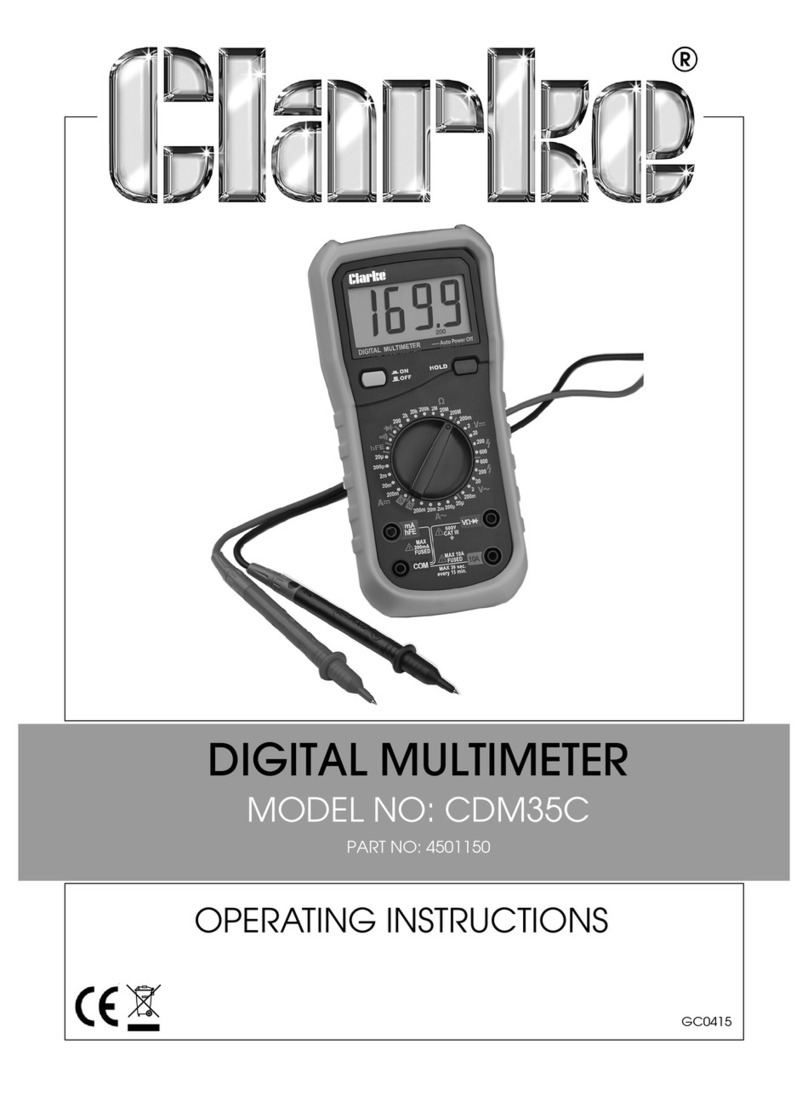
Clarke
Clarke CDM35C User manual
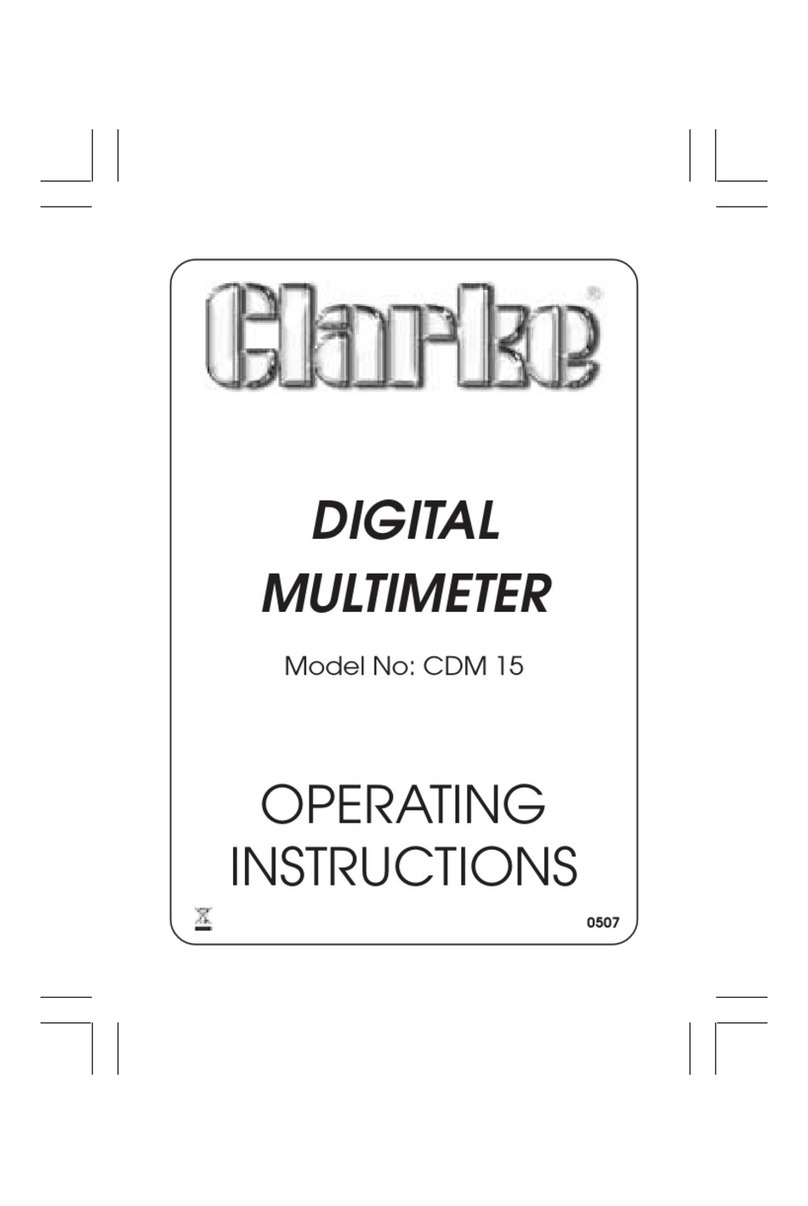
Clarke
Clarke CDM 15 User manual
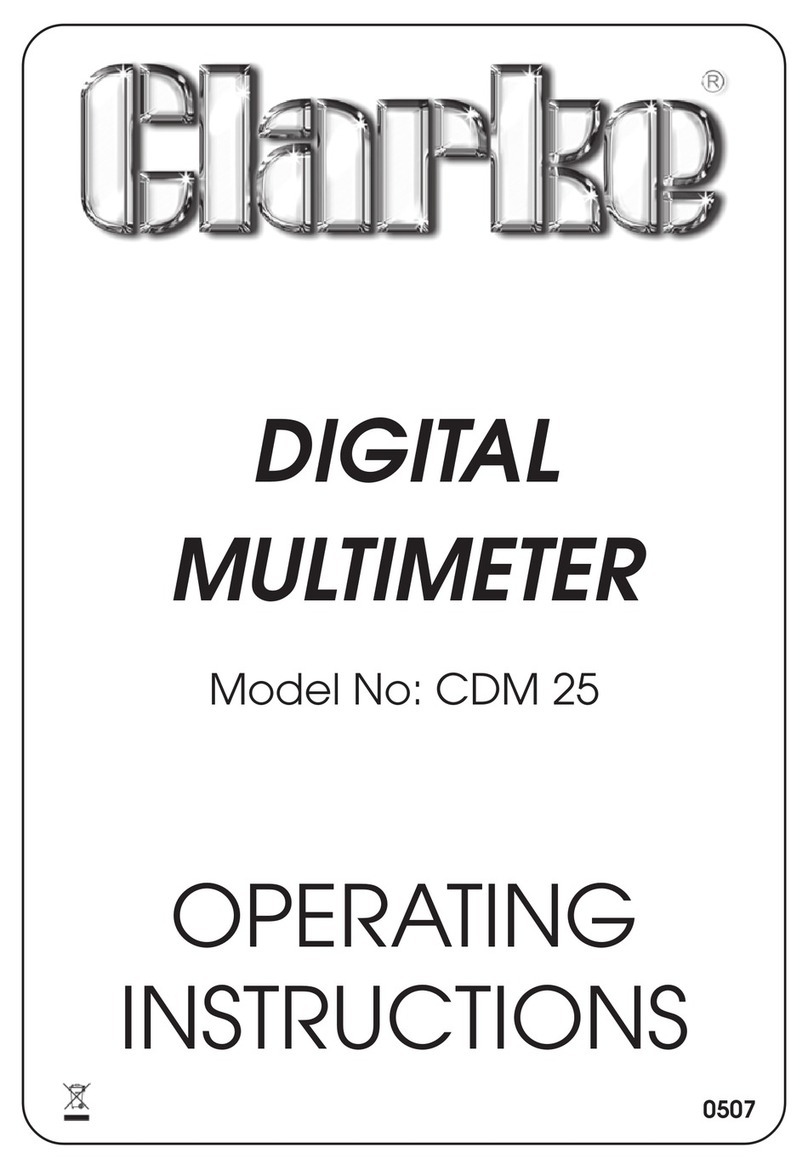
Clarke
Clarke CDM 25 User manual
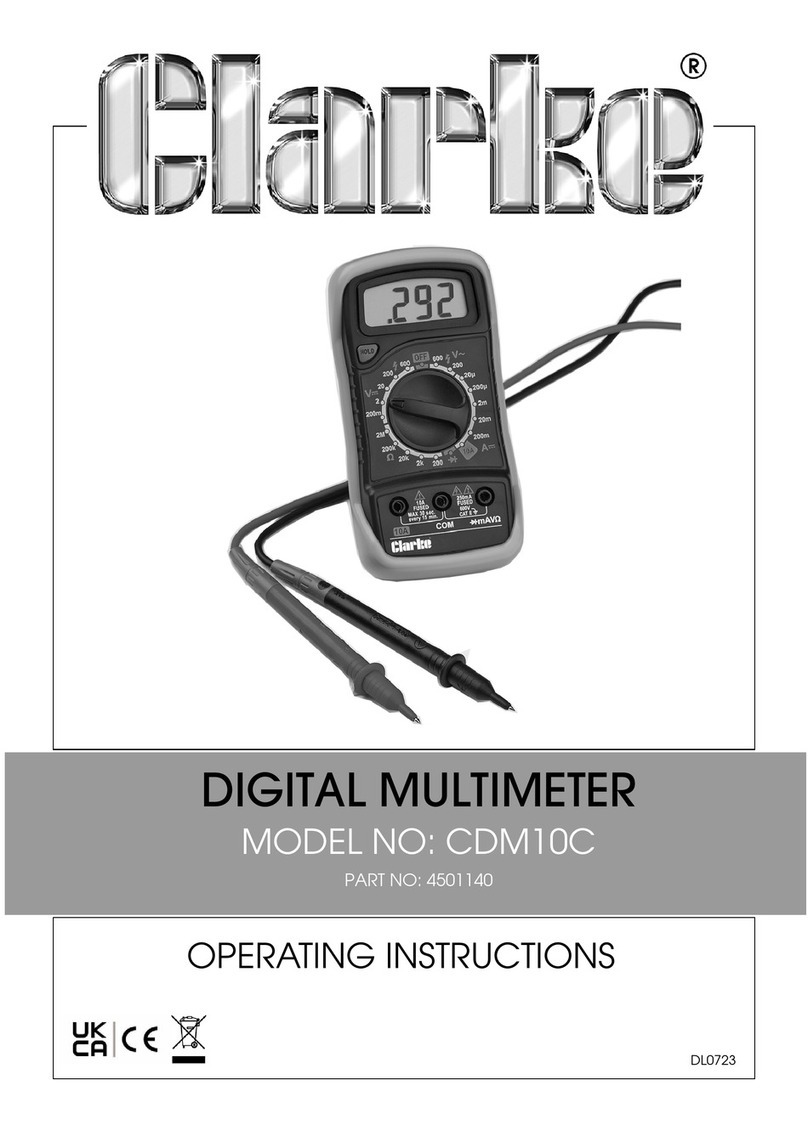
Clarke
Clarke CDM10C User manual
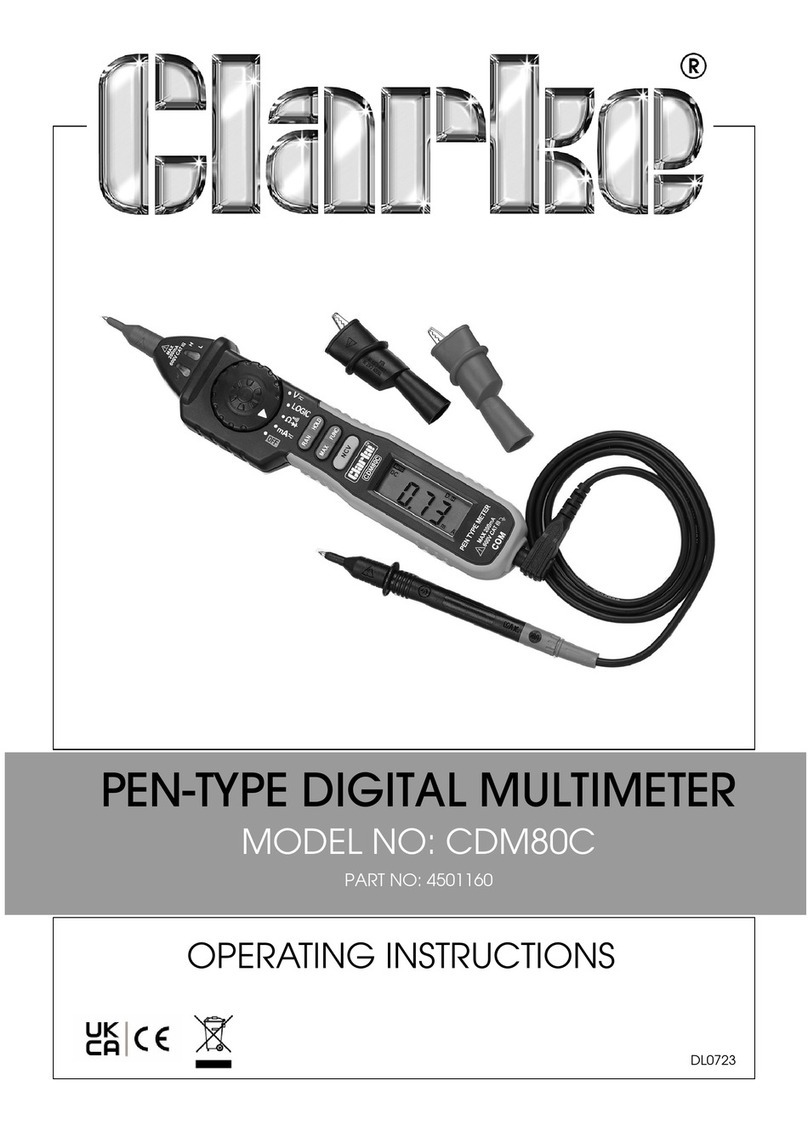
Clarke
Clarke CDM80C User manual
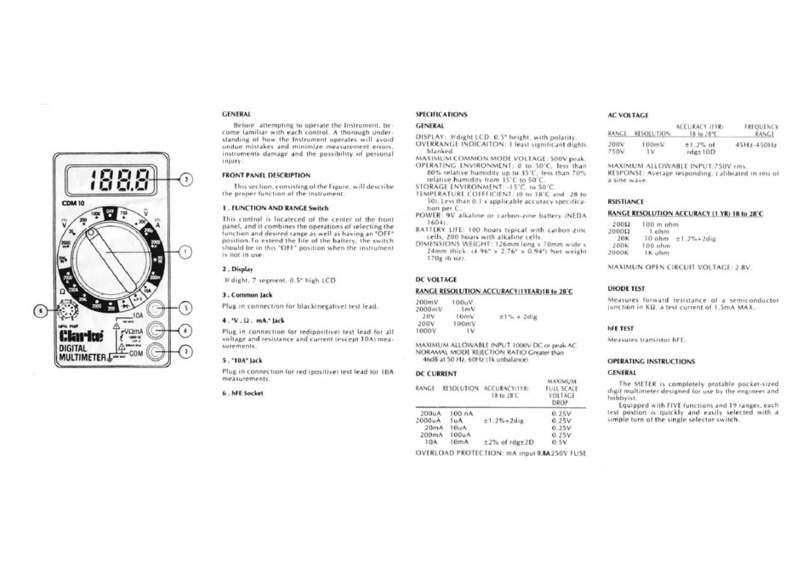
Clarke
Clarke CDM10 User manual
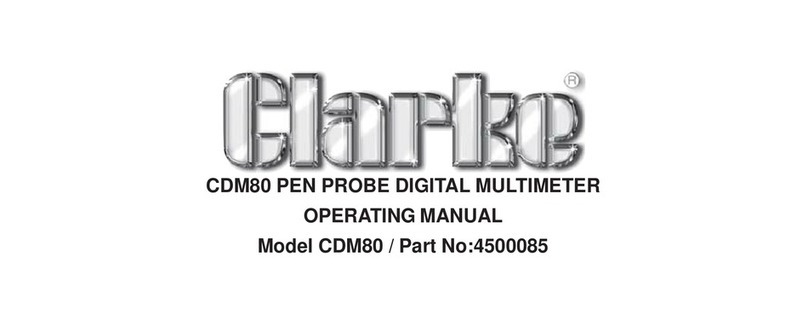
Clarke
Clarke CDM80 User manual
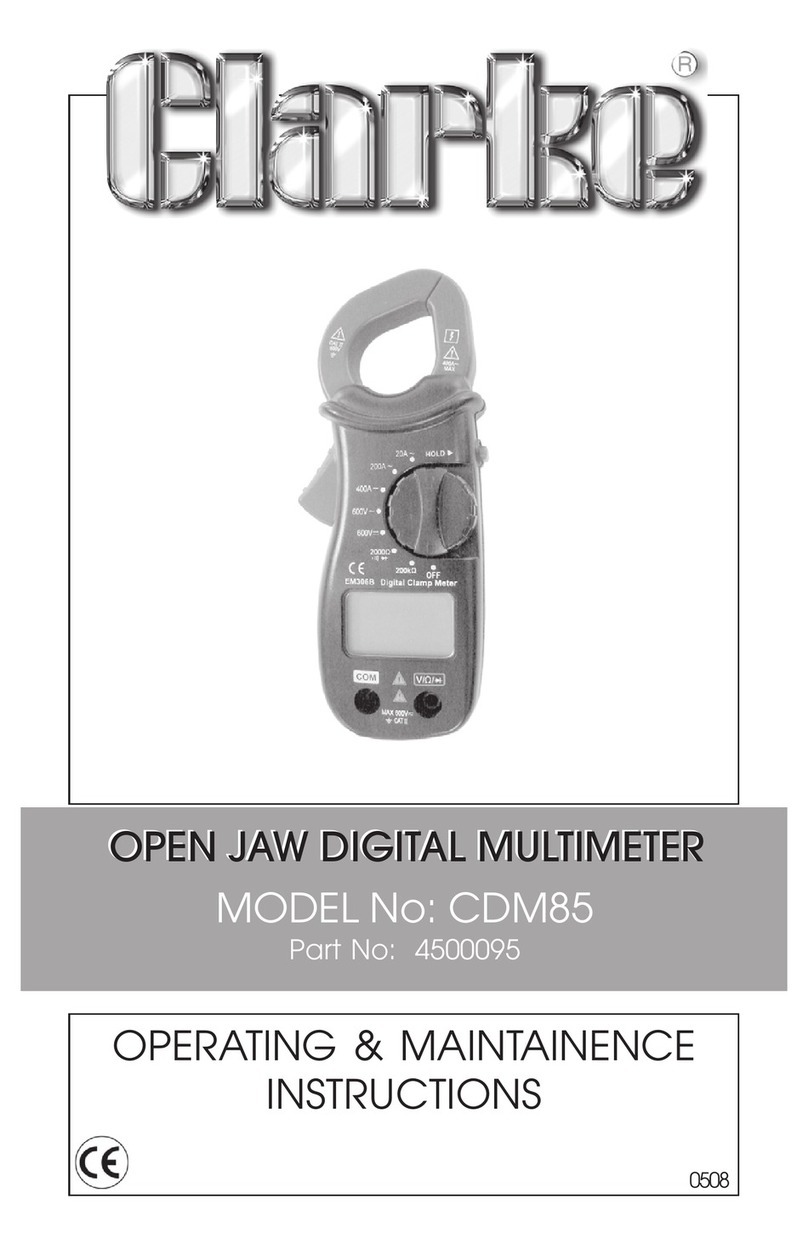
Clarke
Clarke CDM 85 Operating instructions
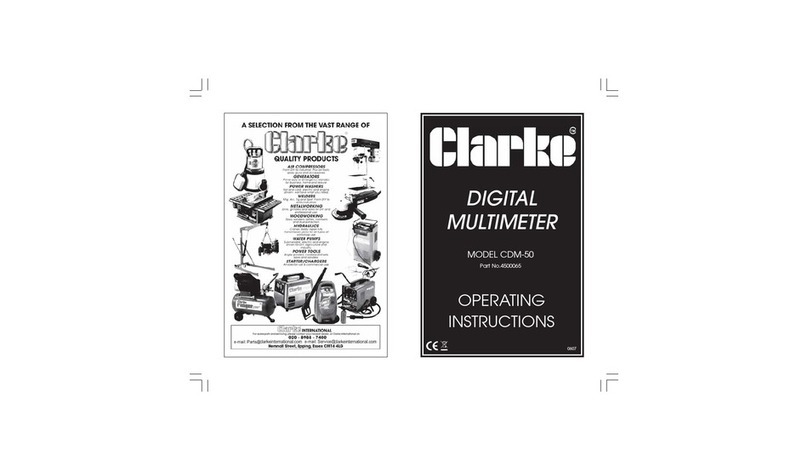
Clarke
Clarke CDM-50 User manual
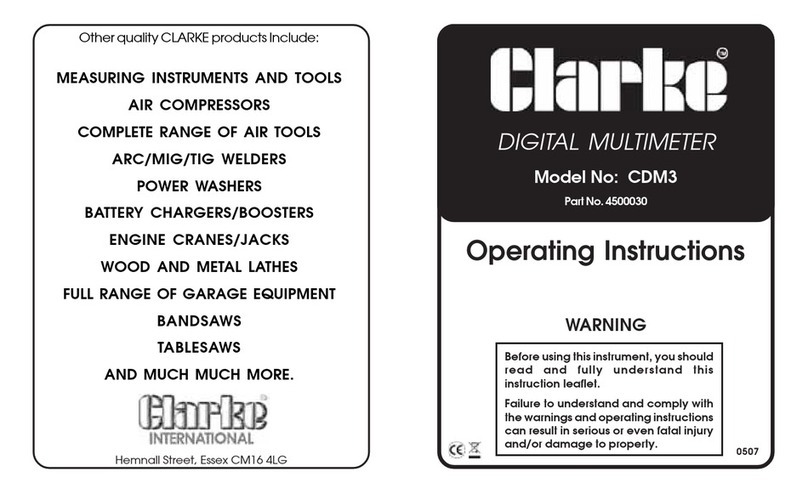
Clarke
Clarke CDM3 User manual


